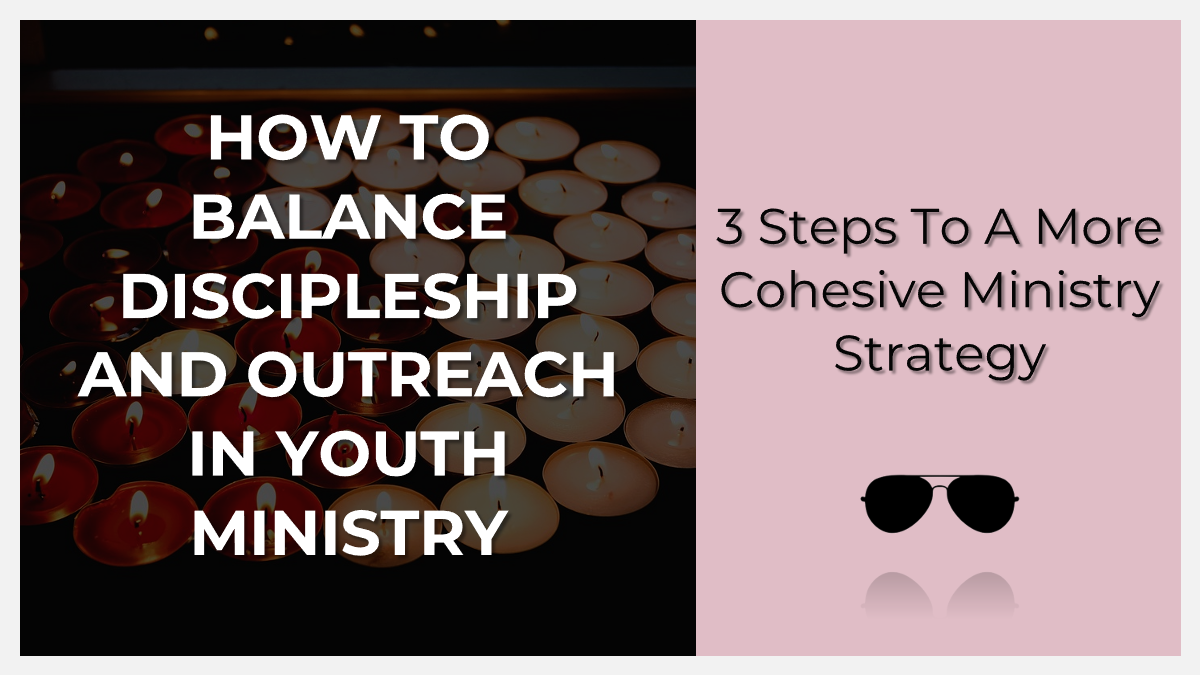
How to Teach Teenagers About Living Out Their Faith at School
For most students, school isn’t just where they spend the majority of their time—it’s also where their faith gets tested

or many students, Easter feels like a spring holiday—spring break, chocolate bunnies and an excuse to wear something nice to church. Your church may even ost a community event around Easter time. The cross, however, stands as the turning point of history, a reality that transforms everything. If we’re honest, the idea that Jesus died for our sins can sound like a churchy cliché. To help students move past routine, we need to show them the depth, power and personal significance of what Jesus did.
Many teenagers have heard “Jesus died for our sins” so often that it barely registers. It feels distant, like something for someone else. I’ve seen kids look bored during a Good Friday service, then later admit they never thought the cross had anything to do with their own lives. To change that, we need to connect the cross to their stories.
Start by inviting them to write down a sin, struggle or burden they carry and then physically nail it to a wooden cross. The act of hammering your burden onto a cross helps students realize Jesus bore it for them. Share real stories of people whose lives have been changed by Jesus’ sacrifice. A volunteer once told our group how forgiving a deep hurt freed him from years of bitterness; students leaned in because they knew that feeling. Walk through Jesus’ last moments with them so they can feel the weight of His love. Read about His betrayal by Judas, the trial, the crown of thorns and the nails. Ask them to imagine what it would be like to watch someone take your punishment because they love you.
Emphasize that the cross is more than a historical event; it speaks hope into our present. When students see that Jesus died with their sin in mind, it moves them from hearing a story to meeting a Savior. The cross is personal, and when teenagers understand that, Easter begins to matter in a new way.
AMany students don’t understand why Jesus had to die. Questions like “Can’t God just forgive people without suffering?” or “If God is loving, why did He allow Jesus to go through that?” come up often. Some teens even say, “I don’t think I’m that bad—why would Jesus have to die for me?” These questions are honest and deserve thoughtful answers.
Help them see the weight of sin. Romans 6:23 calls the wages of sin death, and Hebrews 9:22 says forgiveness requires blood. Sin isn’t a minor mistake; it creates a barrier between us and God. Imagine owing a debt you can’t pay, and someone else clears it for you. In 2 Corinthians 5:21, Paul explains that God made Jesus, who had no sin, to take on ours so we could be right with God. Jesus taking our place shows both God’s justice and His love.
Talk about how justice matters. A judge can’t ignore wrongdoing, but imagine if that judge stepped down from the bench and paid the fine for the guilty. That’s what happened at the cross. Jesus absorbed the penalty our sin deserved so we could be free. When students grasp this, the cross becomes not just an abstract sacrifice but a gift of love they can accept. God doesn’t simply overlook our sin; He deals with it, then invites us back into relationship. Understanding the necessity of the cross helps students appreciate its beauty.
It’s tempting to skip over the suffering and jump straight to Easter Sunday, but the cross We often rush to Easter Sunday because we love celebration, but the cross is the context for the empty tomb. Teenagers need time to sit with what Jesus endured if they’re going to fully appreciate the joy of His victory. Our culture avoids pain, but the gospel doesn’t.
Take your group through Luke 22–23. Read slowly about Jesus’ betrayal with a kiss, His prayer in Gethsemane and the kangaroo court that sentenced Him. Pause to talk about how His closest friends fell asleep when He needed them and then ran when He was arrested. Discuss His silence in the face of false accusations, and His prayer for those who mocked and beat Him. Ask students how they would feel if a friend betrayed them, then imagine Jesus choosing to forgive anyway.
Encourage them to listen to His last words. “Father, forgive them.” “My God, why have you forsaken me?” “It is finished.” These aren’t just lines in a play. They reveal God’s heart for us. Help students picture the scene—the crown of thorns pressed into His head, the nails driven into His hands and feet, the darkness over the land. One teen told me she finally understood Jesus’ love when she watched a reenactment and heard the hammer hitting the nails. When students spend time at the cross, they feel the weight of sacrifice and love. Then, when the stone is rolled away, joy explodes in a deeper way.
Some teenagers view the cross as a past event that doesn’t touch their present. But the cross speaks freedom over our shame. Romans 8:1 promises no condemnation for those in Christ. That means the mistakes you made last week don’t define you. A student once confessed to lying to her parents and felt crushed by guilt. Reading that verse and seeing how Jesus carried her sin freed her to apologize and move forward.
The cross shapes our identity. 2 Corinthians 5:17 says that anyone in Christ is a new creation. You’re not what people label you. One guy in our group struggled with how others saw him until he realized he was called a child of God. He began making choices based on that identity rather than trying to fit in. Talk about how the cross gives us victory over sin. Galatians 5:1 says Christ set us free so we could stand firm. A senior told me he felt trapped in a cycle of failure until he understood Jesus broke that cycle. He started to rely on Jesus’ strength and accountability from friends, and his life changed.
Teach them that the cross isn’t just about eternity; it’s about living in Jesus’ power now. When students connect their daily struggles to what happened on Calvary, they see that Jesus’ death and resurrection have everything to do with their friendships, decisions and sense of worth.
The cross shows how far God will go to save us, and the resurrection shows His power to deliver. Without the resurrection, the crucifixion would be a tragedy. Because Jesus rose, sin and death are conquered. The enemy is defeated, and hope is alive. Romans 8:11 says the same Spirit that raised Jesus lives in us, giving us life.
Use stories to illustrate this. I once talked with a student whose grandmother had passed away. We read Jesus’ words in John 11:25–26: “I am the resurrection and the life.” That Easter, she clung to the promise that death doesn’t have the last word. Another student shared how knowing Jesus lives gave him courage to face bullying. He believed that even if his circumstances were hard, his future was secure.
Emphasize that Easter confirms Jesus’ identity and His promises. He said He would rise, and He did. That means we can trust Him when He says He will never leave us. Talk about how the resurrection fuels our worship. It fills us with hope, knowing that suffering and death don’t win. Encouraging students to anchor their hope in a living Savior changes how they see the world.
AAt the end of your teaching, invite students to respond to the cross. Ask if they’ve been seeing it as a distant story or if they’re ready to let it change them. Challenge them to move beyond hearing about Jesus’ sacrifice to letting it shape their lives. Will they confess a hidden sin, trust Him for the first time, or renew their commitment to follow Him?
Encourage them to reflect on what Jesus did and ask Him to speak to their hearts. Let them know that responding to the cross isn’t a one-time decision but a daily choice to live in freedom and hope. Share your own journey of responding to Jesus’ sacrifice. Remind them that Jesus meets us where we are, but He doesn’t leave us there. He invites us into a life marked by grace and transformation.
The cross invites a response, and Easter is a powerful time to say yes. Students who see the cross as an invitation will find that it leads them into a deeper, more authentic faith. And for us, it’s a reminder that Jesus’ love calls us back day after day, changing us from the inside out.
Related Posts:
How to Teach Teenagers About Spiritual Apathy
Check out Plot Twist – A sermon series designed to help students understand the cross and resurrection in a fresh, powerful way.

For most students, school isn’t just where they spend the majority of their time—it’s also where their faith gets tested

If you’ve ever finished a school year wondering whether your students are actually growing in their faith, you’re not alone.

One of the most common tensions youth pastors face is whether to focus more on helping students grow deeper in